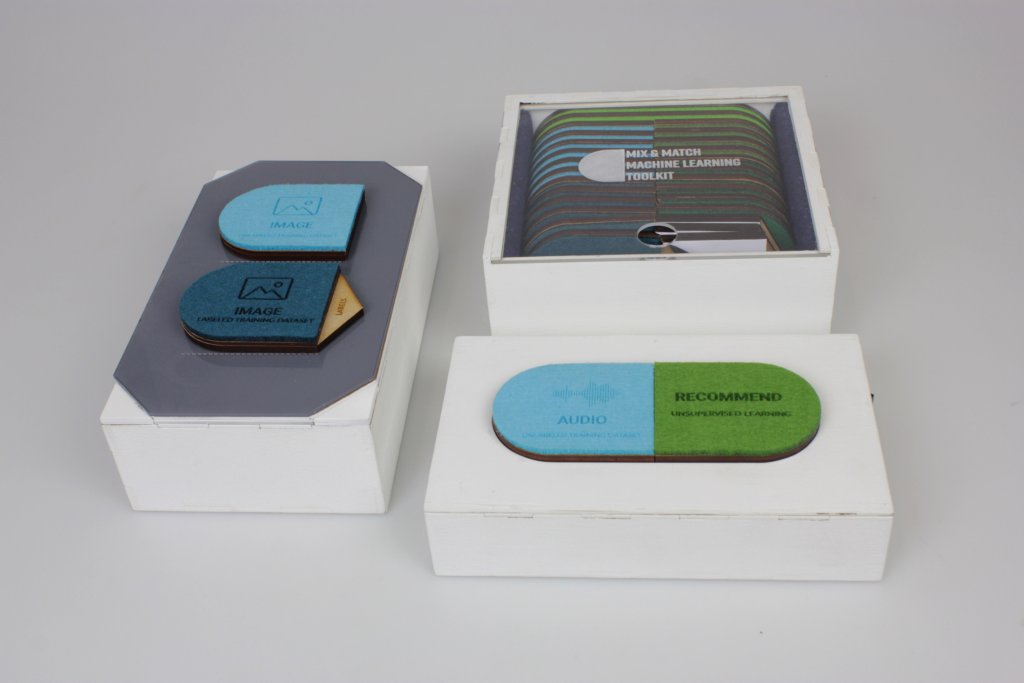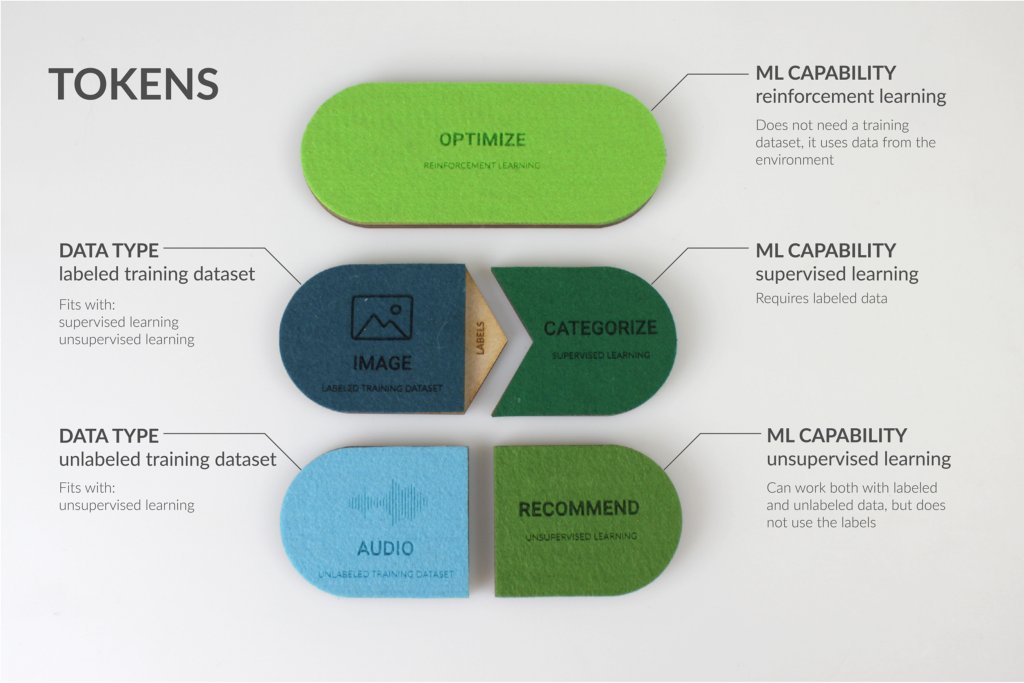For most people and designers, Machine Learning (ML) is an incomprehensible black box. Yet it is used in products all around us, just think of YouTube, Spotify, but also self-driving cars and the technology underlying who can receive a loan. All these technologies need to be designed and while designers are currently often only involved in the last stages, we believe that designers should be there at the start in order to design products and services that are better grounded in user and societal needs. However, to design with ML, designers should have a better understanding of what ML can do; it is this aspect that is most challenging given that ML is a broad and complex technology.
We designed the Mix & Match Machine Learning Toolkit to provide designers will relevant knowledge during the first steps of their design process. This hybrid toolkit uses tangible tokens representing types of data and ML capabilities and limitations. ML capabilities are verbs describing what can be done with ML, e.g., to cluster or to recommend.
By playing with these tangible tokens, designers can discover what combinations are possible. More information about individual tokens and combinations can be found by placing them on a sensing board, which opens a digital webpage with explanations and real-world example applications.
The toolkit was deployed in research with design students and (design) professionals. This showed that it is successful in providing relevant knowledge to designers without any ML knowledge, and that it supports multidisciplinary collaboration.
One of the (many) challenges designers face when trying to work with ML, is understanding what it can and cannot do. So how can we explain this to designers without going into all the technical details and how can we make it directly usable in their design project?
The Mix & Match Machine Learning Toolkit achieves this by providing designers with a hybrid digital/physical toolkit with which they can explore, combine and learn about different types of data and types of ML capabilities, each represented as a tangible token that can be placed upon a sensing board to see information and examples.



